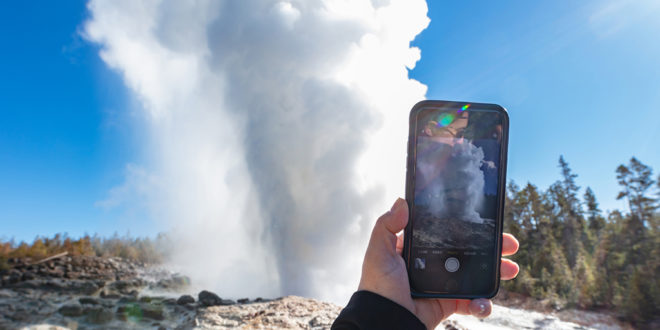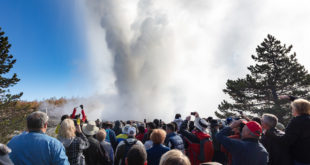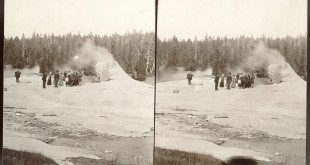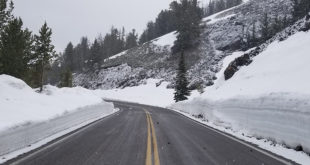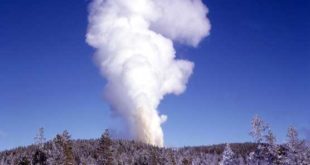With increased geyser activity observed by trackers in 2018 and the beginning of 2019, does this mean there’s something serious happening under the Yellowstone Caldera? Probably not, say the experts.
Yellowstone insiders and geyser gazers were all aflutter when Steamboat Geyser awakened from dormancy and began erupting again in 2018. As well they should be: a Steamboat Geyser eruption is an awesome sight and billed as the world’s tallest geyser at 300 feet, though the eruptions in 2018 didn’t always reach that level. Still, at the end of the day, 2018 ended up being the most active year recorded for Steamboat Geyser eruptions, and so far the pace is similar in 2019.
And with Giant Geyser erupting more often as possible, as well as a surprise Ear Spring Geyser eruption, has some outside observers wondering if there’s something worrisome going on underweath the Yellowstone Caldera. The word from the experts: no.
“But back in 2007 to 2008, Giant went bananas,” Michael Poland, scientist-in-charge at Yellowstone Volcano Observatory, told National Geographic. “It erupted many, many more times than it had in the past year—and Steamboat didn’t do anything of the sort.”
There are unexplained changes in Yellowstone thermal activity regularly, ranging from unexpected eruptions that force changes in the landscape, such as the 1989 Pork Chop Geyser eruption, as well as lessened activity in prominent features like Echinus Geyser. Such is life in the Norris Geyser Basin, considered the most active and hottest geyser basin in Yellowstone. This waxing and waning in geyser activity has been true since humans began recording Yellowstone thermals and is highly unlikely to change. No, the Yellowstone super volcano is not on the verge of blowing.
But there is one development that may be leading to increased geyser activity: the past few winters in Yellowstone have been unusually snowy, and the experts say that increase in water levels could be leading to more activity:
Research tentatively suggests that the same heavy precipitation may have provided the faults involved with plenty of lubrication, allowing them to jut forward with reckless abandon.
In both cases, it’s difficult to make any definitive statements. There aren’t really any direct measurements of the subsurface water in the park, and such inferences are based on the records of surface water and precipitation. For now, Poland says, “we’re just speculating.”
Image courtesy National Park Service.
 Yellowstone Insider Your Complete Guide to America's First National Park
Yellowstone Insider Your Complete Guide to America's First National Park
